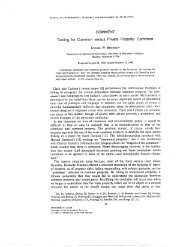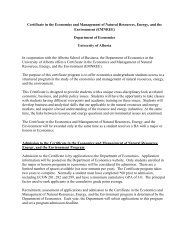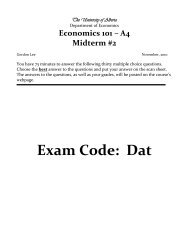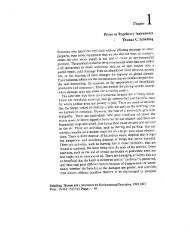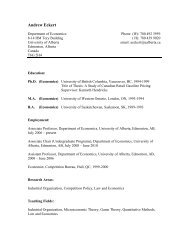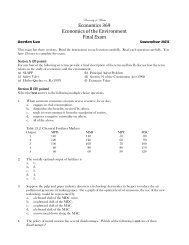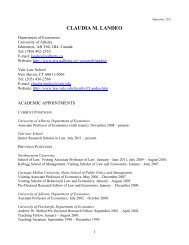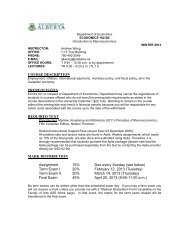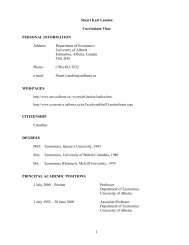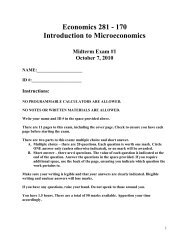Fall 2012 Final Exam
Fall 2012 Final Exam
Fall 2012 Final Exam
Create successful ePaper yourself
Turn your PDF publications into a flip-book with our unique Google optimized e-Paper software.
27. Suppose a firm can practice perfect first-degree price discrimination. The lowest priceand total output will occur at the point wherea. The marginal cost curve intersects the marginal expenditure curveb. The demand curve intersects the supply curvec. The average cost curve intersects the demand curved. The marginal revenue curve intersects the marginal cost curvee. The marginal cost curve intersects the demand curve28. Bette’s Breakfast, a perfectly competitive eatery, sells its “Breakfast Special” (theonly item on the menu) for $5.00. The costs of waiters, cooks, power, food, etc. averageout to $3.95 per meal; the costs of the lease, insurance and other such expenses averageout to $1.25 per meal. Bette shoulda. Raise her prices above the perfectly competitive levelb. Close her doors immediatelyc. Continue producing in the short run, but plan to go out of business in the long rund. Lower her outpute. Continue producing in the short and long run29. A firm’s cost-output elasticity equals 1.4. This implies thata. There are diseconomies of scaleb. There are neither economies nor diseconomies of scalec. There are economies of scaled. Marginal cost is less than average cost30. Why is there no market supply curve under conditions of monopoly?a. Since the monopolist is the only firm in the market, it simply allows its marginalcost curve to act as the “monopolist’s” supply curve.b. Output decisions depend not only on marginal cost but also on the demand curve.Shifts in demand lead to changes in output but not price. Thus, there is no one-toonecorrespondence between price and the seller’s quantity.c. Output decisions depend not only on marginal cost but also on the demand curve.Shifts in demand lead to changes in price, output, or both. Thus, there is no oneto-onecorrespondence between price and the seller’s quantity.d. Output decisions depend not only on marginal cost but also on the demand curve.Shifts in demand lead to changes in price but not output. Thus, there is no one-toonecorrespondence between price and the seller’s quantity.8



